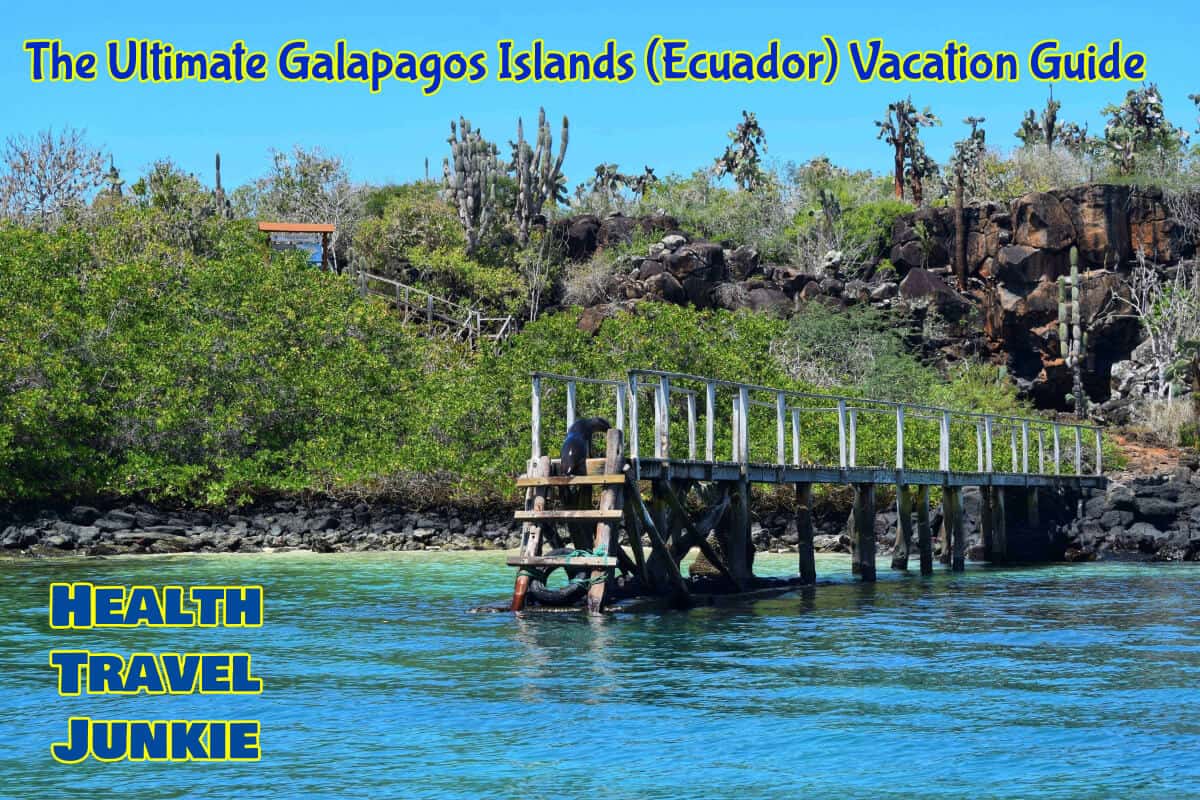The Galapagos Islands is an Ecuadorian Marine Reserve, and a very popular tourist destination just off the coast of South America. Instead of being one big island, its an archipelago which came into existence through volcanic eruptions. There are only four inhabited islands: Santa Cruz, San Cristobal, Isabela, and Floreana.
Santa Cruz has the largest human population, thus with fewer animals roaming around. San Cristobal is the “capital” of the archipelago. It’s touristic side is like a smaller version of Santa Cruz, but with equally good (if not better) excursions in nature. Isabela is less inhabited than the previous two, with the best marine wildlife. Although inland on this one, you’ll only find volcanic landscapes – almost no animals. Lastly, Floreana is reachable by ferry from Santa Cruz. Yet since there are only around 100 inhabitants, few bother visiting.
Contents
Santa Cruz Island, Galapagos
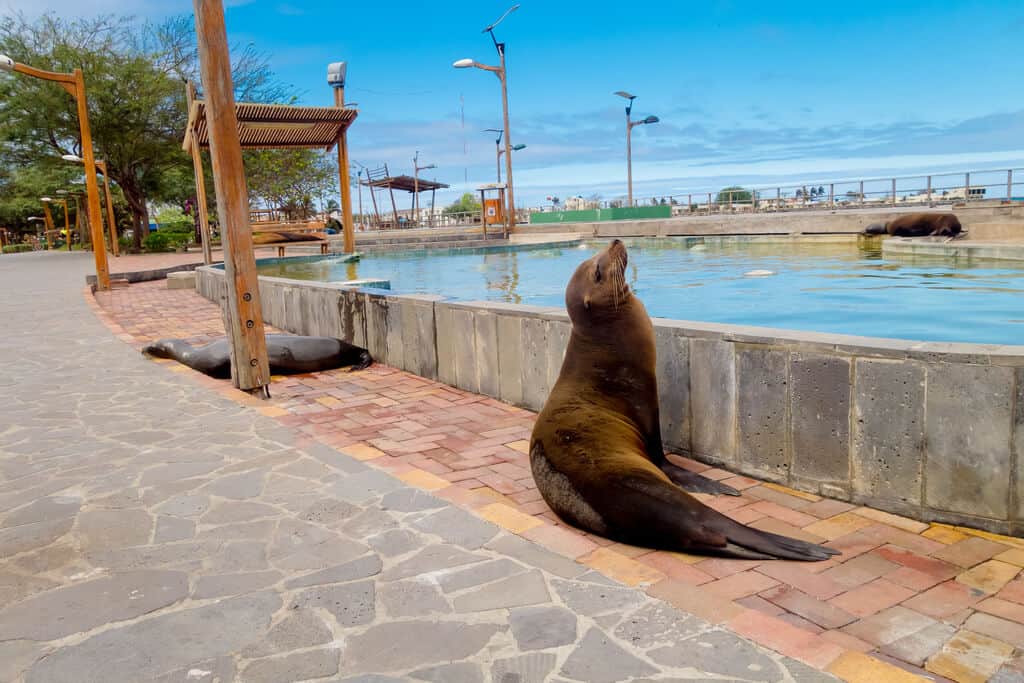
Baltra
Most flights land at Baltra Airport, on the small dry, deserted island of Baltra (north of Santa Cruz). It takes an hour or two from the airport to the town of Puerto Ayora – this includes a ferry to Santa Cruz Island, followed by a bus ride.
Charles Darwin Museum
The free Charles Darwin Museum is around 10 to 15 minutes walking from central Puerto Ayora. There are only a few tortoises at the breeding center. In the exhibition building, there is information on the Galapagos origins through volcanic outbursts, and how the animals subsequently arrived. For example, some wildlife are speculated to have traveled on plant debris from South America. While plant seeds are likely to have drifted thousands of miles by ocean.
Also check out the Puerto Ayora fish market, close by, where sea lions come for a nap or to get a few scraps of fish off-cuts from the market.
Las Grietas
The next free excursion is Las Grietas – a narrow but deep crack, fun for snorkeling. Take a ferry taxi (80 cents) at the Puerto Ayora harbor, then walk 10 minutes to Las Grietas. There are usually plenty of tourists who scare most of the fish away. Plus, there’s not really a place to safely store valuables while snorkeling, thus preferably leave valuables at home.
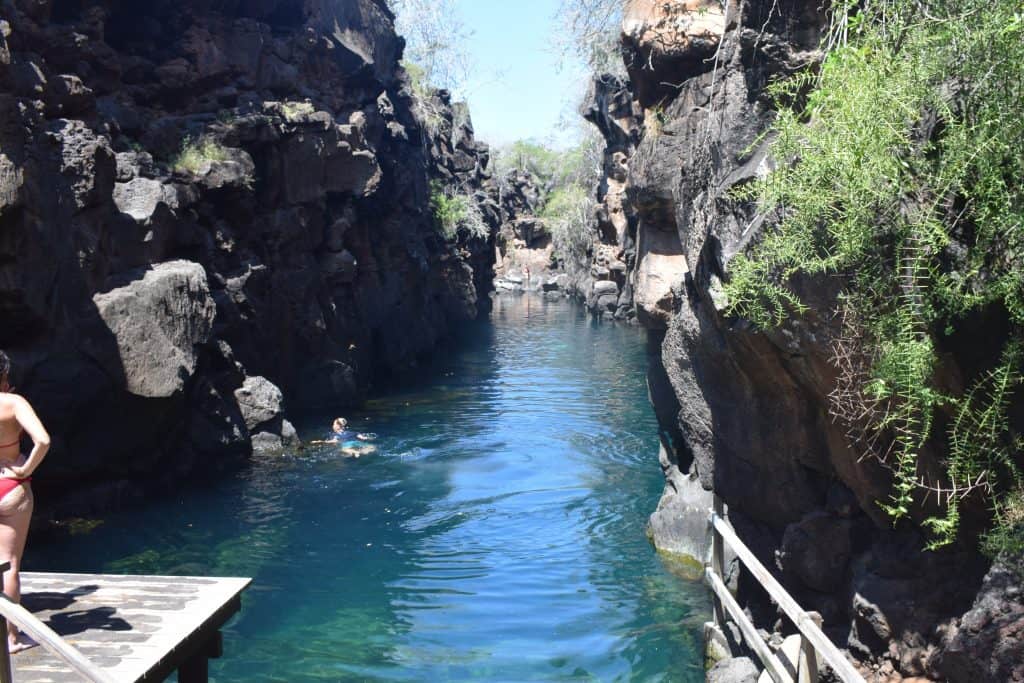
Tortuga Bay
Tortuga bay is another free excursion known for its marine iguanas, a specie only found in the Galapagos (after evolving from land iguanas). To find these amphibious reptiles, walk to the swimming-friendly lagoon far-end of the beach. Marine iguanas are not aggressive and live off sea algae.
Tortuga Bay itself is not for snorkeling, due to the dangerous tides.
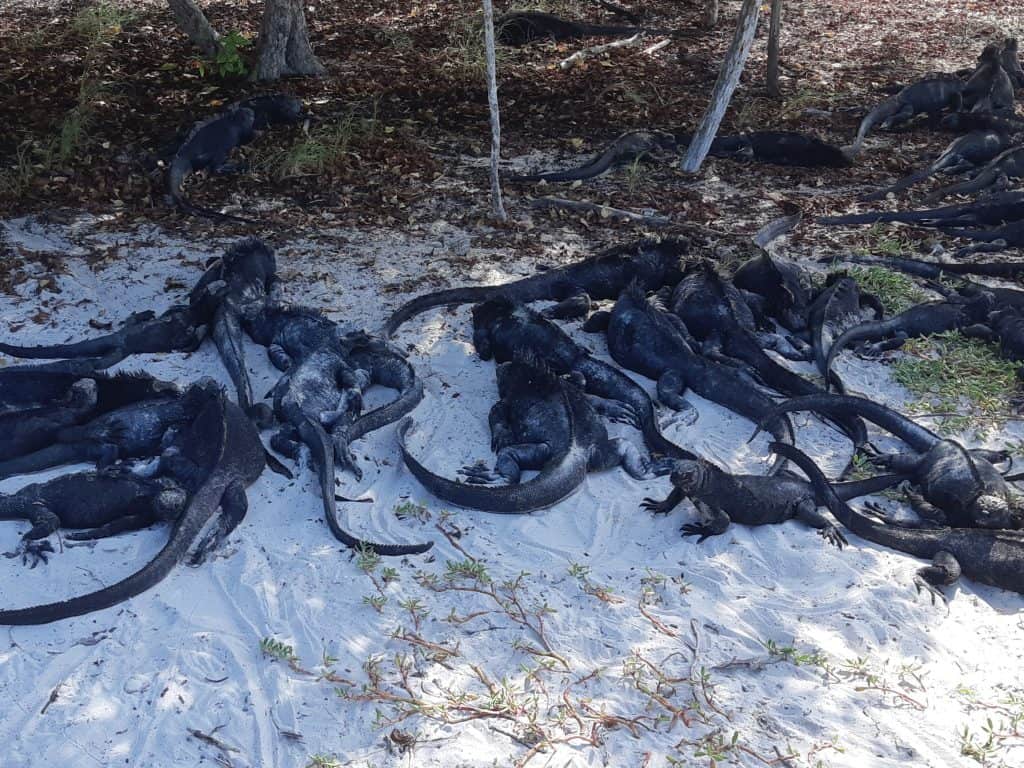
Next up, I undertook a snorkeling trip by boat (cost: $35). Swimming with docile, smaller sharks, turtles, and tropical fish – an activity that would become somewhat repetitive over the next week or two.
The Santa Cruz Highlands
I visited the Tortoise ranch (“Rancho Primicias”) with a $40 highlands tour. This includes seeing the Los Gemelos craters (which is not really anything special) and the underground volcanic cave – also nothing special. But seeing the large tortoises is something you’ll remember.
The tortoises here are much more interesting than those at the Charles Darwin Center. The other equally famous tortoise ranch in the highlands is “El Chato”. These reptilian cows take regular mudbaths to rid themselves of parasites.
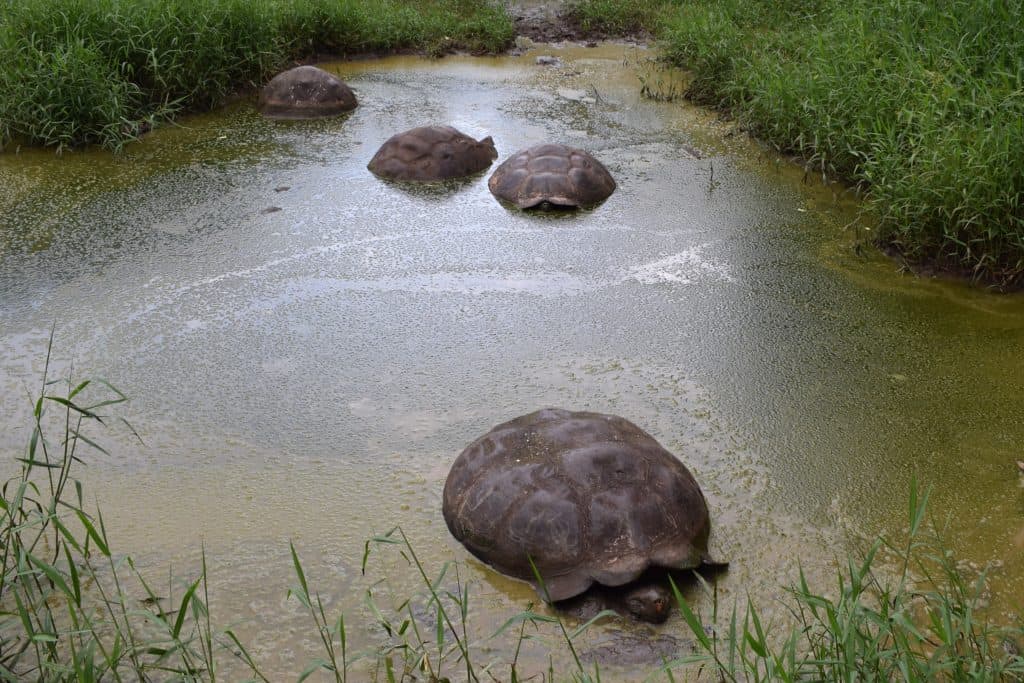
Santa Cruz Fitness
- I jogged to Tortuga Bay, around 20 minutes from my hotel. Remember to bring water along (in a jogging-friendly backpack).
- Cycle: Rent a bike in Puerto Ayora. If you are fit enough, take the long bike ride to the highlands to see the tortoise ranch. You could take a taxi to the ranch for around $25, then do the bike ride back to the town. The Highlands is at a higher altitude, thus you’ll get downhill in if you do it this way around. The taxis are all double cab SUV’s, with space for bags or bikes at the back.
- Bodywell Fitness: This is a very basic small gym with old equipment and machines. Still, it’s good enough to get a work-out. They’re open throughout the week, but the Sunday they were closed. Price: $3. For the treadmill, you pay $1 extra.
- In Galapagos, it’s more enjoyable to jog outside in the tropical weather and low altitude, especially after visiting Quito’s high altitude and, somewhat polluted, thin air.
- There are 2 Crossfit boxes in Puerto Ayora, Sharkbox and Mataxarno.
Santa Cruz Food
Check out the open-air Seafood area (Charles Binford street). The more you’re willing to pay, the better food you get. Prices range from $10 for a small stingy meal, to $25 for a seafood feast. You can negotiate and ask a smaller fish for a better price. Seafood includes Brujo fish, Tuna steak, Octopus (which isn’t nearly as edible as Calamari), Prawns, and Lobster.
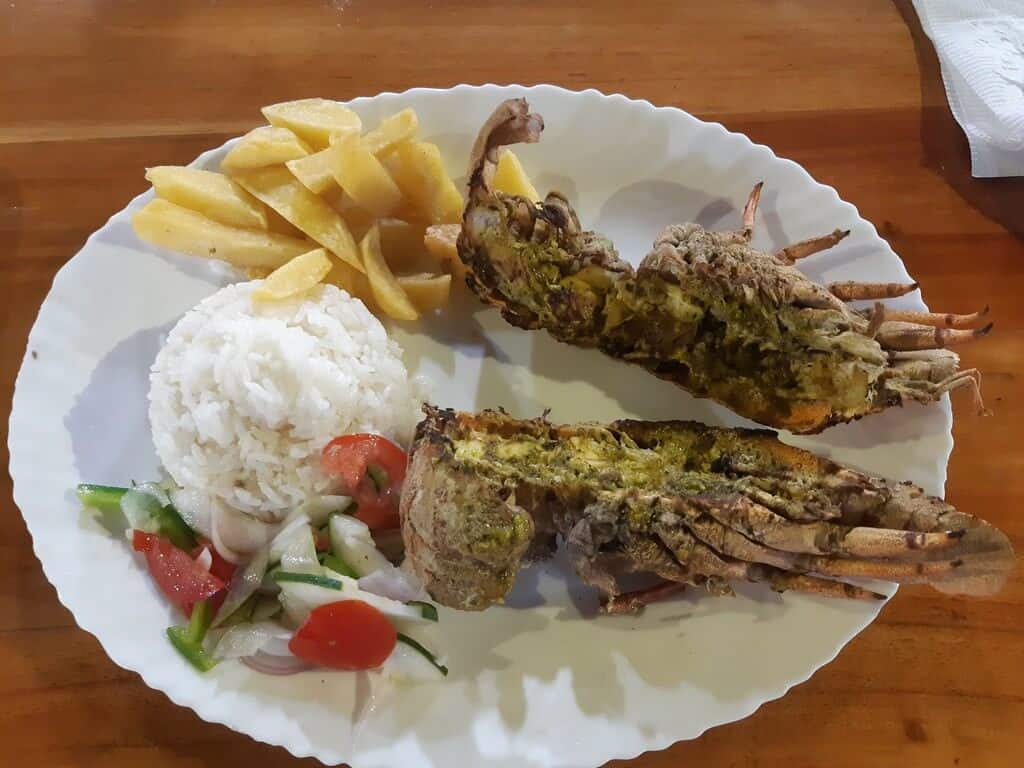
Isabela Island
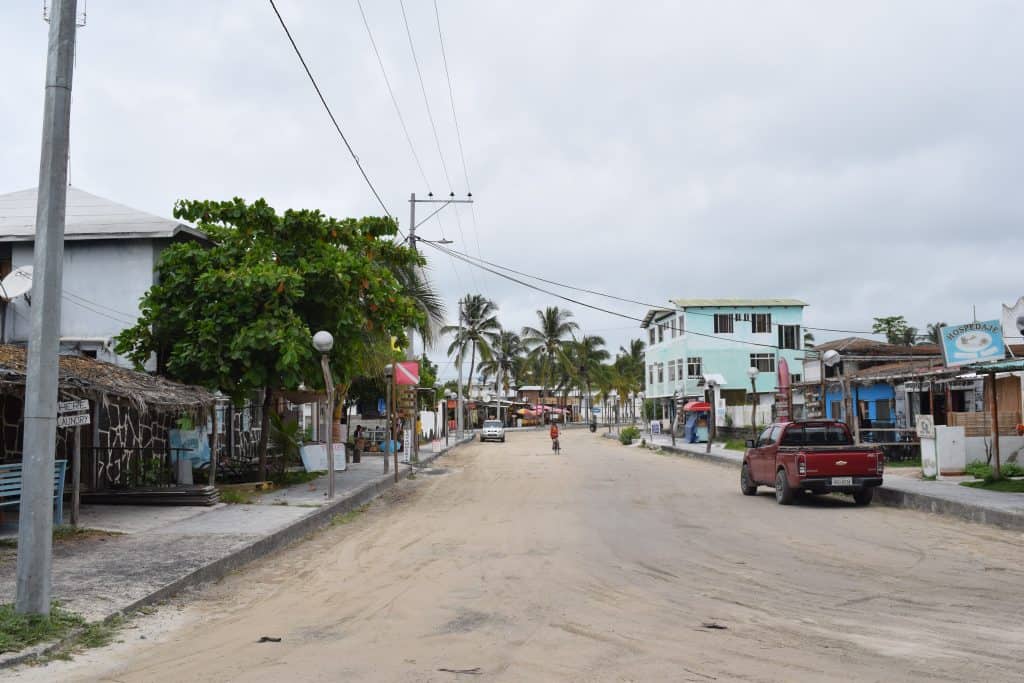
Isabela is the largest island in Galapagos, the shape co-incidentally resembling a seahorse. Inland there isn’t that much to see. Try the volcano hike if you’re into landscapes (you won’t see animals). Snorkeling is great though – Los Tuneles is perhaps the highest rated snorkeling trip in Galapagos. But the free alternative, Concha de Perla, can be as good (except for not seeing sea-horses).
Concha de Perla
This snorkeling area is right next to the main boat port (make a left turn as you walk from the town to the ferries). It’s a small cordoned off lagoon for impressive free snorkeling, including swimming with sharks and turtles. Some parts are very deep, thus during high tide you can’t see to the bottom. Otherwise, I suspect you may notice more sharks, rays, and tropical fish during low-tide. Visit at both low and high tide to potentially find different kinds of marine life.
The coral reefs are rare and genuine. Thus snorkelers are asked not to touch the coral, as parts of the reef are damaged. I noticed a tourist briefly standing on a piece of coral, outside of the roped area – behavior which is a serious threat to the survival of these free activities.
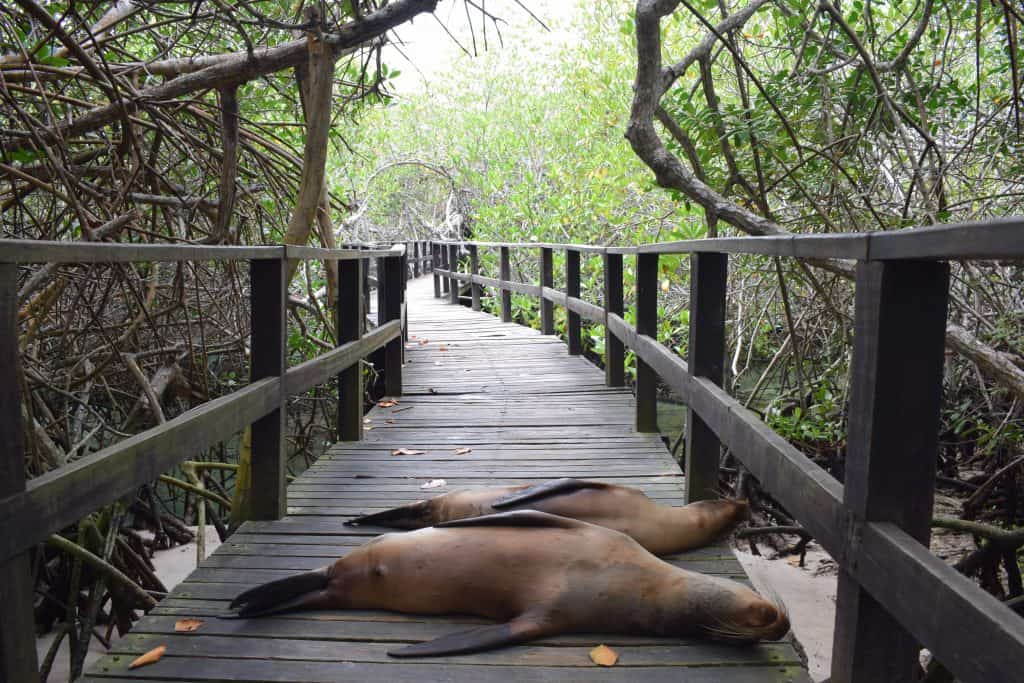
The seals in Isabela were less tame than in Santa Cruz at the fish market. If you get too close, expect some growling. Stick to the 2-meter rule. Although, as you can see in the photo above, it can clearly be hard at times.
Los Tuneles
Los Tuneles is likely the best snorkeling trip in Galapagos. Expect sea horses, docile small sharks, penguins, blue-footed booby birds, and swim with sea-berries scavenging turtles. I paid the full price of $120 with Pahoehoe tours as they seemed very professional (although some companies offer this for $95).
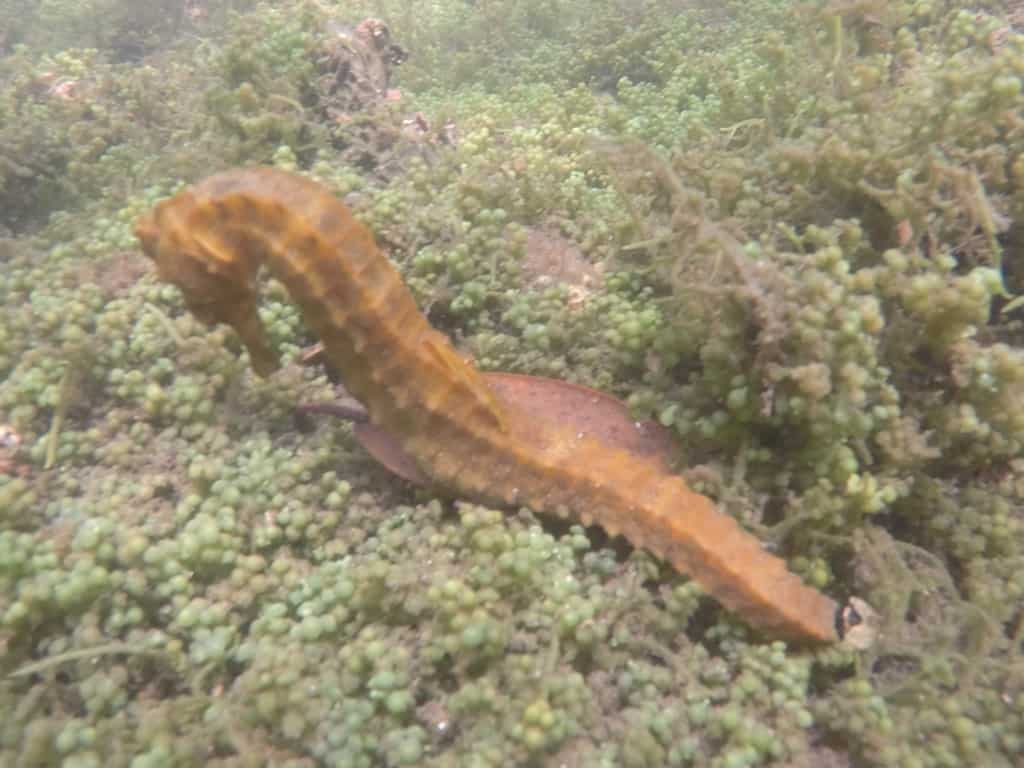
In Galapagos, it’s not a bad idea to pay full price, as you get better quality in service. Also, when buying ferry tickets at the tourist agencies, you’ll pay $25 for a boat filled to capacity, or $30 for a more relaxed ferry.
Another paid tour is Tintoreras snorkeling, but reviews suggest the previous two activities are the best. It’s sufficient to simply do these 2 snorkeling trips in Isabella. And the volcano hike, if you are into landscapes.
After the snorkeling, I took the ferry back to Santa Cruz instead of lingering for another day. Otherwise, I’d have to take two separate ferries to San Cristobal on the same day. You can’t go directly to San Cristobal from Isabela by boat. Flying is another expensive option at $200. Moreover, running out of cash is a problem in Isabela since there are no ATM’s. While tour companies basically force you to pay cash by charging +- 20% extra for card transactions.
Moreover, since Puerto Villamil is very quiet by day and night, you may get bored if you stay longer than a few days. Plus there’s only a faint, slow wifi signal.
Food options are worse than Santa Cruz. However, you’ll find Ceviche for around $12.
There are no fitness activities on Isabela, apart from going for a jog or renting a bike.
San Cristobal Island
San Cristobal is simply more of the same as the previous two islands. The expensive 360 tour seems like the best “paid activity” (this includes Kicker Rock snorkeling). At around $135 to $150, it’s not much more expensive than doing Kicker Rock on its own. However, underwater visibility can be low depending on the season.
Should I return to Galapagos, I’d rather do scuba diving e.g. at Kicker Rock (obviously, scuba is much better than snorkeling). Initially, I was warned how expensive scuba is at these islands. BUT, scuba is only slightly more expensive than the pricey snorkeling trips.
The best free snorkeling close to the town at San Cristobal is at Muelle Tijeretas. It’s near the Mirador (“lookout point”) Cerro Tijeretas – and reachable with a short hike. In this area, also find the Centro de Interpretacion – a visitor center explaining the history of the islands. As well as the very decent Playa Mann and Playa Punta Carola beaches. I highly recommend checking out these free activities which you can do in the same afternoon.
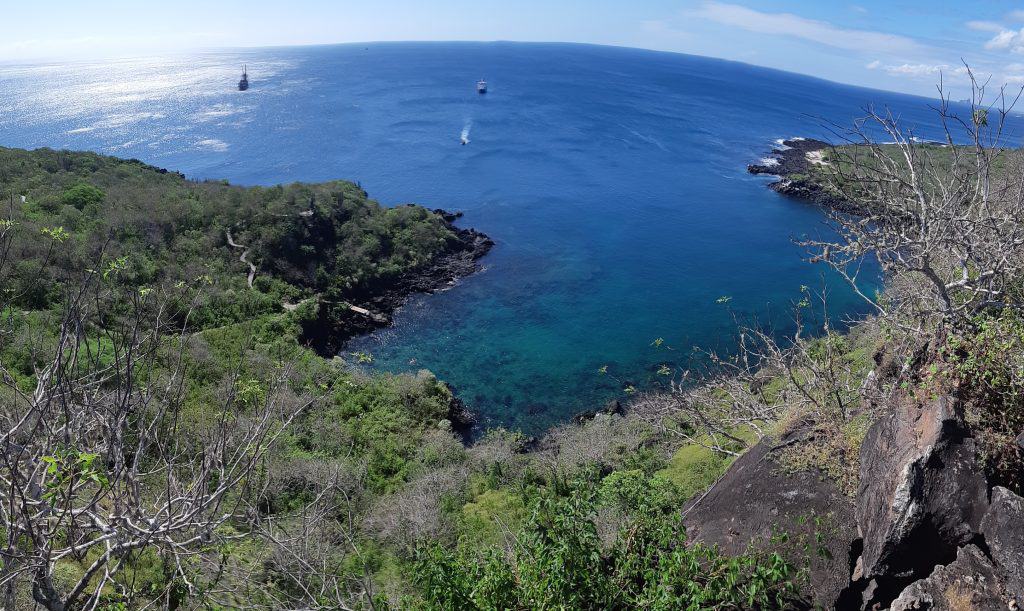
Next to the main seafront road, you’ll notice (and smell) the hoards of sea lions resting on the beach at night in Puerto Baquerizo Moreno.
I left Galapagos via the Airport right next to San Cristobal’s town. It’s very easy to reach with a taxi, and cheaper than flying to or from Santa Cruz.
San Cristobal Fitness
There is a gym at the Miconia Hotel (price: $3). But it’s not open weekends. During the week, I did CrossFit instead at Tortuga Fitness Box (price:$4). There are classes every hour starting daily at around 5 pm.
Food: There is no specific seafood area like in Santa Cruz, but walking along the main seafront road you’ll find plenty of restaurant options. For example, the Rustica Restaurant, with a few healthy, but expensive options (including vegetarian and vegan). As with the rest of the Galapagos, although you could find “cheap” food here or there – cheap will tend to be very low quality.
Galapagos Islands Packing List
- Snorkeling equipment: You could bring your own snorkeling gear, including fins, snorkel, facemask, and a wetsuit. Otherwise, it’s very easy to rent on the islands.
- Mosquito spray: In this tropical climate, expect mosquitos, unless your hotel has insect protection screens on the windows.
- Bring allergy pills along, if needed, as doctors aren’t always close by.
- Sunscreen, plus a good After Sun Cream, to prevent and alleviate sunburns when necessary.
- Good hat also protecting the back of the neck, and sunglasses.
- Swimming clothes (duh)
- Go-Pro or another underwater camera. Opportunity to get some of the best underwater footage that you possibly can anywhere.
- Some extra cash. Very few businesses allow you to pay with a credit card. You’re forced to pay $120 in tourism fees in cash before you even step out of the Airport. There are ATMs in San Cristobal and Puerto Ayora, but not in Isabela. There are also daily withdrawal limits of around $200 per credit card.
- An Ecuadorian phone charger adapter plug (easiest to find in the large cities, or maybe at the airport).
- Seasickness (mareado) pills (Available at any Galapagos pharmacy). During one of my ferry rides, half the boat got seasick. Take a pill half-an-hour before boarding.
Galapagos: The Negatives and Drawbacks of Paradise
Of course, there are many cool positives to visiting Galapagos (mentioned above). But these are the negatives:
- The wifi is terrible on all the islands.
- You get tired of the same, expensive food and very basic fruits/vegetables. There are no well-stocked grocery stores. And barely any exotic fruit (like in mainland Ecuador).
- There isn’t a great gym.
- The paid excursions are expensive.
- Pay $120 in taxes simply to get on the islands. Plus, you need a return flight to get a visitor pass at the airport.
- The excursions can be repetitive. You see the same animals for example in Isabela that you already saw in Santa Cruz. If you do a highland tour in Santa Cruz, see the giant tortoises, then do the same tour in San Cristobal, you’re basically paying twice to see the same thing again.
Galapagos Conclusion
The Galapagos Islands is a fun 7 to 10 day getaway destination. But it’s not a great place to set up camp for longer. Still, it’s probably the best tourist attraction in Ecuador. Alternatives include an adventurous Ecuadorian inland Wanderbus Itinerary, or visiting the Amazon Jungle.
A large percentage of Ecuador visitors skip Galapagos due to how expensive it is. But, if you focus on doing the free excursions mentioned above (while not staying more than 10 days), you could still have a good time, within a reasonable budget.
Have you ever been on vacation to the Galapagos Islands? Post your questions or own experience in the comments below!

